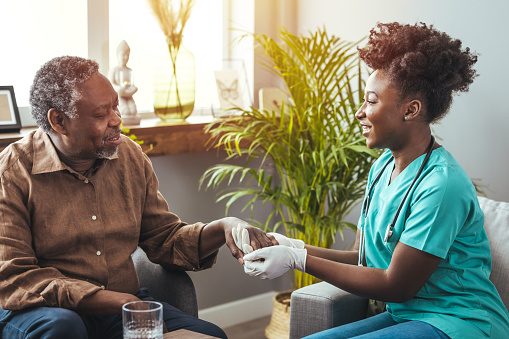April Is Parkinson’s Awareness Month

Commonly known for its movement or motor-related symptoms, Parkinson’s disease (PD) is the second-most common neurodegenerative disease after Alzheimer’s.
People living with Parkinson’s experience a progressive loss of motor control, manifesting as shaking or tremor and a lack of facial expression. But they are often more impacted by non-motor symptoms like apathy, depression, sleep behavior disorders, loss of sense of smell and cognitive impairment.
Each April is designated as Parkinson’s Awareness Month. “Parkinson’s Awareness Month highlights the critical need for us to continue working together to fund research, care and resources so that one day we may live in a world without Parkinson’s disease,” said John L. Lehr, president and CEO of the Parkinson’s Foundation.
Quick facts
- Nearly one million people in the U.S. are living with PD, which is more than the combined number of people diagnosed with multiple sclerosis, muscular dystrophy and Lou Gehrig’s disease (or amyotrophic lateral sclerosis). That number is expected to rise to 1.2 million by 2030.
- About 60,000 Americans are diagnosed with Parkinson’s each year.
- The incidence of Parkinson’s disease increases with age, but an estimated 4% of people with PD are diagnosed before age 50.
- Research from the Parkinson’s Outcomes Project found that people with PD who engaged in at least 2.5 hours of exercise a week had a better quality of life than those who didn’t exercise at all or started exercising later.
Managing Parkinson’s disease
There is currently no cure for Parkinson’s disease. However, with early diagnosis and an effective plan of treatment, the symptoms of the disease can often be controlled or lessened. Treatment varies widely for each individual, and may include:
- Medication therapy. A number of drugs can help control the symptoms of Parkinson’s disease. The correct drug or drugs, the dosage, the method of taking medication, and the risk of side effects of drugs vary from person to person, requiring careful physician supervision.
- Rehabilitative therapy. Physical, occupational and speech therapists can assess the patient’s abilities and needs, and provide exercises to help maintain the highest possible range of motion, muscle tone, balance and flexibility, and communication ability. Rehabilitation specialists may also help the patient select appropriate adaptive devices.
- Lifestyle alterations. Exercise helps maintain muscle tone and strength. A healthful diet may help ease some symptoms of Parkinson’s and help optimize the utilization of medications you take. Getting enough rest and stress reduction are also important.
Charlesgate staff members have extensive experience in helping people with Parkinson’s lead more fulfilling lives, from helping with the activities of daily living to providing programs and activities that keep them engaged in life. Please contact us to learn more.
To learn more about Parkinson’s or Parkinson’s Awareness Month, visit Parkinson.org/Awareness or call the foundation’s free Helpline at (800) 4PD-INFO (473-4636).
![Charlesgate [logo]](https://www.charlesgate.net/wp-content/uploads/sites/218/2016/12/logo-new.png)